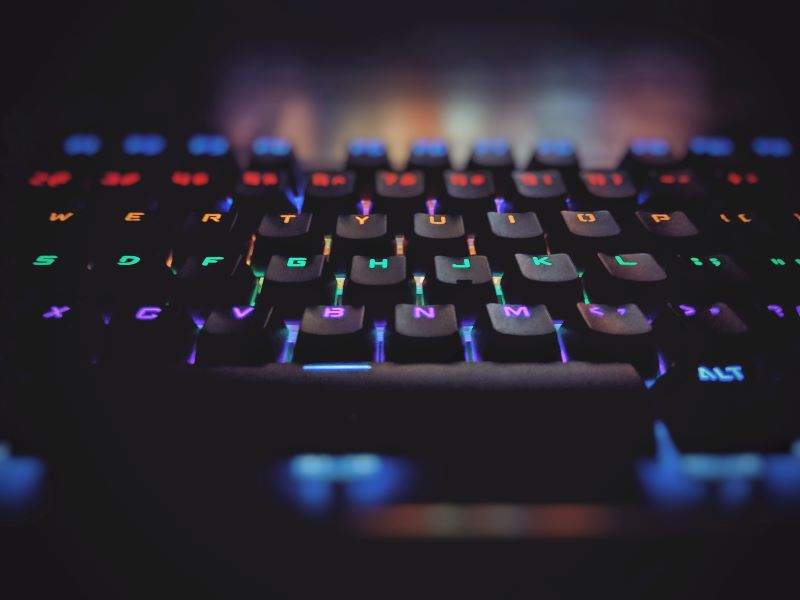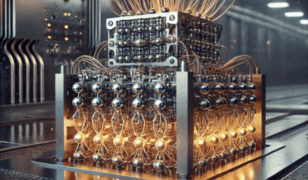From IC Insider Clarifai
Today, the United States and China, often with Russia at their side, are competing to shape security architectures, norms, and practices worldwide. These frictions will likely play out over decades across the world, in outer space, and in cyberspace. AI is a critical component of this technological arms race and will play a direct role in major strategic initiatives, and in practical tactics on the ground. The United States risks falling behind its near-peer rivals if it cannot accelerate AI readiness within the armed forces and the broader intelligence and policy-making community.
Part of the challenge will be training highly skilled data scientists who are capable of designing the underlying algorithms used by AI and machine learning. Many data scientists began their careers as statisticians or data analysts, as this work tends to require a sophisticated understanding of statistical science for success. Basic to advanced computer programming skills are also necessary, further increasing the level of technical expertise required to obtain mission objectives.
But AI readiness depends on much more than this relatively small population of highly skilled technical experts. There is simply too much demand for the power of AI technologies and too few people with this level of expertise. The broad use of AI-based tools in intelligence, surveillance, and reconnaissance demands that AI be explainable and accessible to servicemen and women from a variety of backgrounds.
This is where a number of low-code/no-code tools that are being developed in the private industry will play a critical role. Resources like Clarifai Community make the basic components of AI accessible with easy-to-use interactive tools so that anyone can work hands-on with this technology.
A “batteries included” approach to AI
There are many highly technical and challenging aspects required to develop, deploy and operate AI technology. The underlying math used by a machine learning algorithm must be identified, this algorithm must be implemented in some kind of computer code, the model must then be “trained” on millions of examples of real-world data, and the resulting pre-trained model then runs on powerful computers, and there must be a “front end” user interface created so that human beings can interact with the models.
Low-code tools provide users with everything they need to build AI-powered apps, all in one place. With Clarifai Community, users can browse a vast selection of AI models and try them out without any special technical expertise.
Clarifai has already done this hard work for its users so that they can simply identify an AI model that they are interested in and then “learn by doing”; by experimenting with pre-provided datasets or uploading their own data. Clarifai’s team of experienced researchers has already identified the best algorithms and deployed pre-trained models for the most common scenarios. Users can select models based on the type of input data they are working with the type of model architecture they need, the type of output data they are interested in, or the particular use case that they have in mind.
Hands-on with machine learning
It is critical that we are able to overcome the “explainability” gap for non-technical users of AI, and this is where it is incredibly useful for users to be able to train their own models. Machines learn by looking for patterns in large amounts of data. A typical AI model will need to be trained on thousands, or even millions of examples. Most users will simply not have the time or resources to experiment with building these models from scratch, but fortunately, another aspect of what is made available through Clarifai Community are simple tools for “transfer learning.”
With transfer learning, users are able to build upon and customize existing models. Since the existing models have already been pre-trained on millions of examples, they are able to learn new things quickly. This provides users with a head-start and that significantly reduces the work required to develop custom AI technology.
By allowing non-technical users to experiment with transfer training models, they can begin to get a sense of how machines learn. They can build their own custom models that identify new concepts or accomplish new mission objectives, with only a small amount of training data. The experience of training one’s own custom model is essential to developing a general understanding of AI technology, and to improving the explainability of a given AI solution since the user can see the data that was used to customize the model ahead of time.
Building on simple components to achieve advanced mission objectives
Achieving real-world mission objectives that require full motion video analysis, broad area search, forensic analysis of captured enemy materials, and more require the successful coordination of multiple simpler component parts.
Clarifai Community provides not only the individual components of AI solutions but also allows these components to be combined in creative ways in a graphical workflow builder. Without any coding experience, users can build upon object detection and identification models to accomplish more advanced analytics involving tasks such as object counting and tracking objects over multiple frames of video.
Building out AI workflows not only enables the creation of more complex and sophisticated technology, but it also helps non-technical users break down these complex solutions into their component parts so that they can gain a better understanding of how the technology works without having to read the source code or build anything from scratch. Clarifai Community not only lets users create their own workflows, but provides several pre-built workflows that users can use as starting points, or as examples of design patterns.
The world’s AI community needs you
ISR, pattern analysis, emergency response, aerial surveillance and more depend directly on a country’s level of AI expertise. Clarifai offers a leading computer vision, NLP, and deep learning AI lifecycle architecture for modeling unstructured image, video, text, and audio data. Our technology helps public sector organizations solve complex use cases through object classification, detection, tracking, geolocation, visual search, and natural language processing. Clarifai offers on-premise, cloud, bare-metal, and classified deployments.
Clarifai has long served the missions of the U.S. Federal Government, including the Department of Defense, the Intelligence Community, and Civilian agencies, with state-of-the-art computer vision and natural language processing AI solutions supporting commanders with decision advantage. Use cases include recognizing and tracking threats, detecting objects via aerial and satellite imagery, optimizing equipment maintenance, finding victims in disaster zones, and enhancing security at U.S. government facilities. Clarifai technology is fielded across numerous active mission-critical military deployments.
About Clarifai
Clarifai offers a leading computer vision, NLP, and deep learning AI lifecycle architecture for modeling unstructured image, video, text, and audio data. Our technology helps both public sector organizations solve complex use cases through object classification, detection, tracking, geolocation, visual search, and natural language processing. Clarifai offers on-premise, cloud, bare-metal, and classified deployments.
Clarifai has long served the missions of the U.S. federal government, including the Department of Defense, the Intelligence Community, and Civilian agencies, with state-of-the-art computer vision and natural language processing AI solutions supporting commanders with decision advantage. Use cases include recognizing and tracking threats, detecting objects via aerial and satellite imagery, optimizing equipment maintenance, finding victims in disaster zones, and enhancing security at U.S. government facilities. Clarifai technology is fielded across numerous active mission-critical military deployments.
Founded in 2013 by Matt Zeiler, Ph.D., Clarifai has been a market leader in AI since winning the top five places in image classification at the 2013 ImageNet Challenge. Clarifai was named a leader in Forrester’s New Wave Computer Vision Platforms report, the only startup to receive a differentiated rating. Clarifai is headquartered in Delaware with more than 120 employees and offices in New York City, San Francisco, Washington, D.C., and Tallinn, Estonia. For more information, please visit https://www.clarifai.com/solutions/public-sector-ai.
About IC Insiders
IC Insiders is a special sponsored feature that provides deep-dive analysis, interviews with IC leaders, perspective from industry experts, and more. Learn how your company can become an IC Insider.









